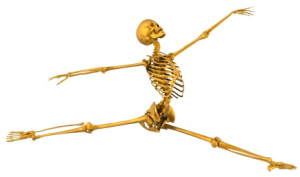 Marriage is good for the health of men’s bones – but only if they marry when they’re 25 or older, new UCLA researcher suggests.
Marriage is good for the health of men’s bones – but only if they marry when they’re 25 or older, new UCLA researcher suggests.
In a study published online in the peer-reviewed journalOsteoporosis International, researchers found evidence that men who married when they were younger than 25 had lower bone strength than men who married for the first time at a later age.
In addition, men in stable marriages or marriage-like relationships who had never previously divorced or separated had greater bone strength than men whose previous marriages had fractured, the researchers said. And those in stable relationships also had stronger bones than men who never married.
Although for women there were no similar links between bone health and being married or in a marriage-like relationship, the study authors did find evidence that women with supportive partners had greater bone strength than those whose partners didn’t appreciate them, understand how they felt or were emotionally unsupportive in other ways.
This is the first time that marital histories and marital quality have been linked to bone health, said the study’s senior author, Dr. Carolyn Crandall, a professor of medicine in the division of general internal medicine and health services research at the David Geffen School of Medicine at UCLA.
“There is very little known about the influence of social factors – other than socioeconomic factors – on bone health,” Crandall said. “Good health depends not only on good health behaviors, such as maintaining a healthy diet and not smoking, but also on other social aspects of life, such as marital life stories and quality of relationships.”
The researchers used data from the Midlife in the United States (MIDUS) study, which recruited participants between the ages 25 and 75 in 1995-96. Participants from that study were re-interviewed in 2004-05 (MIDUS II). Specifically, the authors used hip and spine bone-density measurements obtained by standard bone-density scanners during participants’ MIDUS II visits at UCLA, Georgetown University and the University of Wisconsin-Madison and other data to examine the relationship between bone health and marriage in 294 men and 338 women from around the country. They also took into consideration other factors that influence bone health, such as medications, health behaviors and menopause.
The associations between marriage and bone health were evident in the spine but not the hip, possibly due to differences in bone composition, the researchers said.
The data suggested several significant correlations between marriage and bone health – but only for men. The study authors found that men in long-term stable marriages or marriage-like relationships had higher bone density in the spine than every other male group, including men currently married who had previously been divorced or separated, men not currently in a relationship and men who had never been married.
Among men who first married prior to turning 25, the researchers found a significant reduction in spine bone strength for each year they were married before that age.
“Very early marriage was detrimental in men, likely because of the stresses of having to provide for a family,” said study co-author Dr. Arun Karlamangla, a professor of medicine in the geriatrics division at the Geffen School.
For instance, the authors said, those who marry young are likely to be less educated, leading to lower pay and more difficulty in making ends meet.
The researchers don’t know the biological pathways connecting bone health and marriage – this will be the next stage in their research. And the findings are limited by the fact that there were no longitudinal assessments of bone density; the findings, therefore, only suggest a correlation, not cause and effect.
Despite these limitations, the findings “provide additional new evidence of the association between psychosocial life histories and adult bone health,” the authors write. “The gender differences observed in the association between marital history and [bone strength] are consistent with gender differences seen in previous studies of marital status and other aspects of health, and imply that we should not assume that marriage has the same health rewards for men and women.
“Specifically, never marrying, and experiencing a divorce, widowhood, or separation are associated with poor bone health in men, whereas poor marital quality is associated with poor bone health in women.”
http://www.medicalnewstoday.com/releases/271575.php
Picture courtesy to www.medimanage.com
